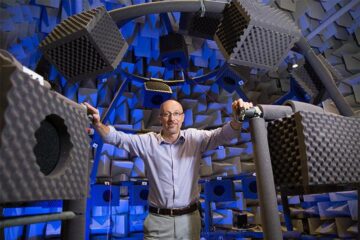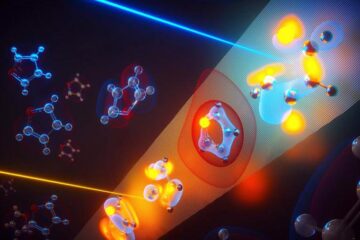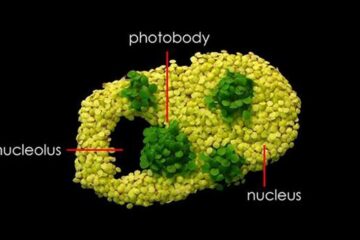Ultrafast laser reveals details about slow electrons

With the help of ultrafast lasers, Dutch researcher Anouk Wetzels from the FOM Institute for Atomic and Molecular Physics has visualised the wave function of slow electrons. The wave function describes how the electron moves around the nucleus of an atom. With this it is possible to directly visualise atomic and even molecular wave functions.
Wetzels used light pulses with a duration of a millionth of a millionth of a second to visualise the wave function of electrons in atoms. With these rapid pulses the physicist specifically kicked electrons out of an atom. A special technique called velocity map imaging was then used to visualise the speed distribution of the electrons. This resulted in a direct measurement of the wave function of an electron in a Rydberg atom.
In Rydberg atoms the outermost electron is so slow that the orbiting time is longer than the duration of an ultrafast light pulse. As a result of this, the interaction between the pulse, which consists of just half a wavelength, and the electron can be seen as a ’kick’. The result of the kick depends on the location and speed of the electron in its orbit around the nucleus. By kicking the electron in the direction of the detector, the speeds of the electrons perpendicular to the detector remain unchanged.
In velocity map imaging the electrons collide with a fluorescent screen. The collisions here cause points of light. The researchers measure the speeds in the surface of the detector and in this manner obtain two-dimensional data about the wave function of the electron.
Light consists of waves with a given wavelength. But light can also be described as a collection of particles, so-called photons. These photons have a specific energy which is directly related to the wavelength of the light. Therefore all of the photons in a blue light pulse have the same amount of energy. When they interact with a material, photons transfer their energy to the electrons in atoms or molecules.
However this photon theory, based on quantum mechanics, could not be used in Wetzels’ experiments. Instead of using light of one given colour, she used light pulses that contained photons with different energies. The Rydberg electron absorbs several photons simultaneously. The interaction results in a targeted force, or in other words a sudden kick, from the light pulse. This mechanism can be described by the simpler theory of classical mechanics.
Just as light is both a particle and a wave, each particle can also be described as a wave. Therefore electrons are not just negatively-charged particles but also waves with a certain amplitude and wavelength. In quantum mechanics these waves are used to calculate the probability of encountering an electron at a certain time in a certain place.
For further information please contact Anouk Wetzels (AMOLF Institute for Atomic and Molecular Physics). The doctoral thesis will be defended on 1 July 2003. Ms Wetzels supervisor is Prof. W.J. van der Zande, tel. 31-24-365-2025, e-mail: zande@sci.kun.nl.
The research was funded by the Netherlands Organisation for Scientific Research.
Media Contact
More Information:
http://www.nwo.nlAll latest news from the category: Physics and Astronomy
This area deals with the fundamental laws and building blocks of nature and how they interact, the properties and the behavior of matter, and research into space and time and their structures.
innovations-report provides in-depth reports and articles on subjects such as astrophysics, laser technologies, nuclear, quantum, particle and solid-state physics, nanotechnologies, planetary research and findings (Mars, Venus) and developments related to the Hubble Telescope.
Newest articles

Why getting in touch with our ‘gerbil brain’ could help machines listen better
Macquarie University researchers have debunked a 75-year-old theory about how humans determine where sounds are coming from, and it could unlock the secret to creating a next generation of more…

Attosecond core-level spectroscopy reveals real-time molecular dynamics
Chemical reactions are complex mechanisms. Many different dynamical processes are involved, affecting both the electrons and the nucleus of the present atoms. Very often the strongly coupled electron and nuclear…

Free-forming organelles help plants adapt to climate change
Scientists uncover how plants “see” shades of light, temperature. Plants’ ability to sense light and temperature, and their ability to adapt to climate change, hinges on free-forming structures in their…





















